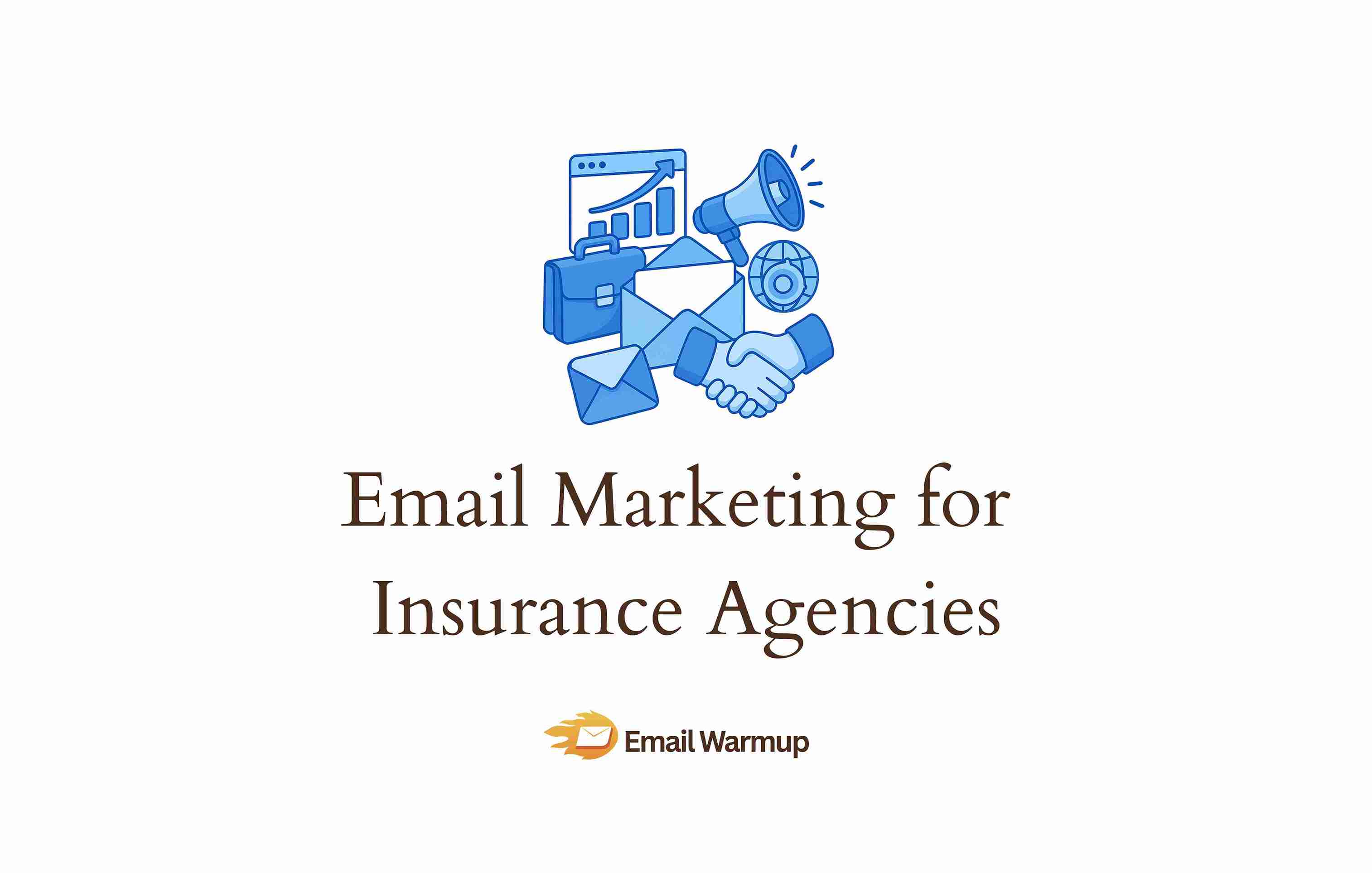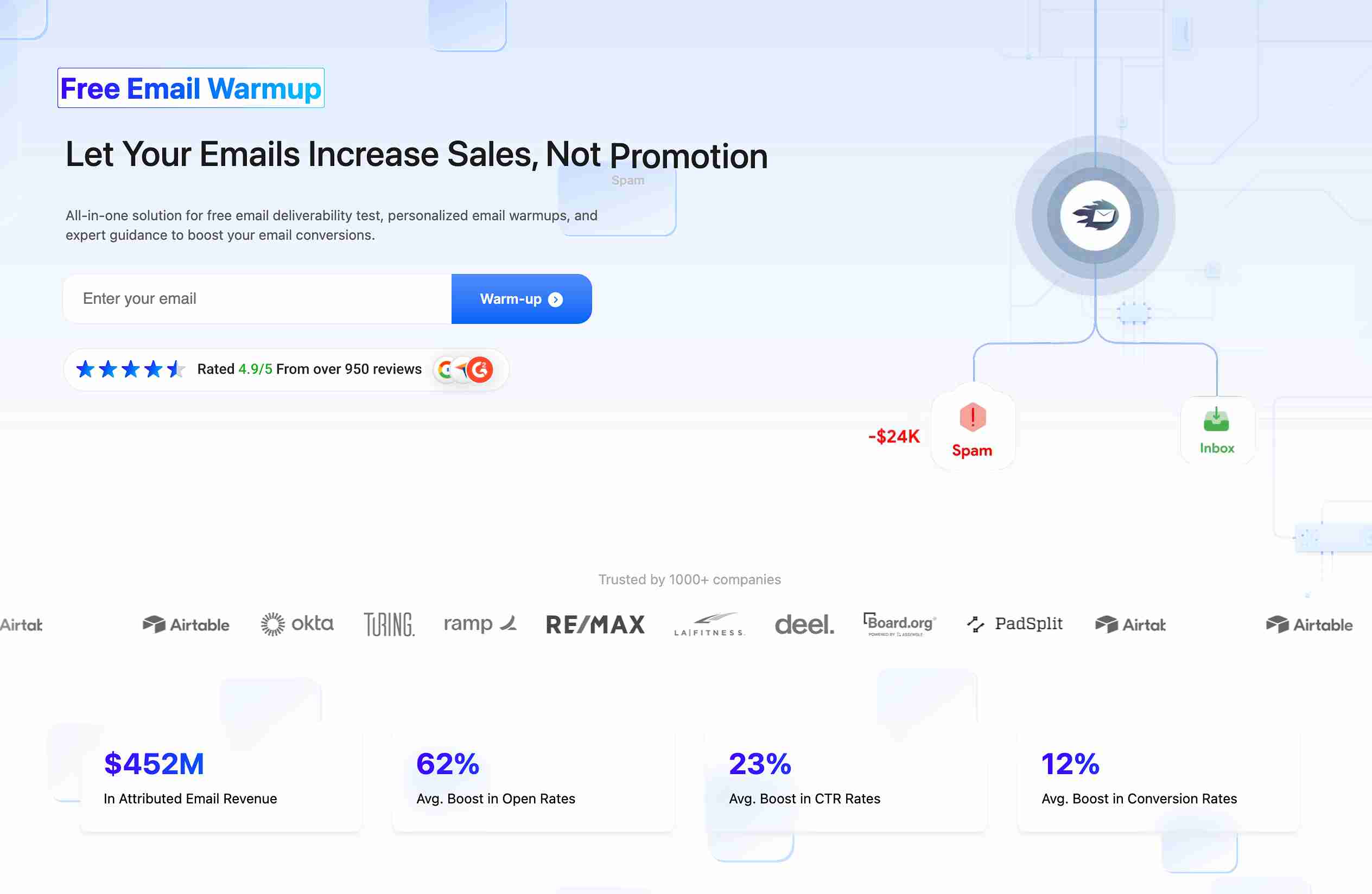
Most insurance agents lose clients not because of pricing or coverage issues, but because of silence. Your prospects forget you exist. Your policyholders don’t hear from you until renewal time (and by then, they’ve already shopped around).
Strategic email marketing creates the consistent touchpoints that transform one-time buyers into lifetime clients. When done right, you’ll see measurable improvements in retention, cross-sells, and referrals without adding hours to your workday.
As an email marketing consultant who has helped insurance agencies boost client retention by 5% and revenue by 3% through targeted email strategies, I’ve created this guide covering:
- Why email delivers $36 for every dollar you invest
- Metrics that actually matter for tracking revenue impact
- The specific campaigns that work for different policy types
- How to segment your book of business for maximum relevance
- Automation strategies that send the right message at the right time
Let us help you build an email program that keeps you top-of-mind with clients while freeing up your time for what matters most.
TLDR: Email marketing for insurance agencies at a glance
For those who need answers fast, here’s a quick skim of email marketing for insurance agencies:
| Campaign type | Purpose | When to send | Expected results |
| Welcome sequence | Set expectations, establish a relationship | Immediately after policy purchase | 30-40% open rates |
| Monthly newsletter | Stay top-of-mind | First week of each month | Consistent engagement |
| Renewal reminders | Secure renewals before shopping | 60, 30, 14, 7 days before expiration | 5% retention increase |
| Cross-sell campaigns | Bundle policies, increase revenue | 30 days after initial purchase | Lower churn rates |
| Educational content | Build trust, position as an expert | Bi-weekly | Higher lifetime value |
| Re-engagement series | Win back inactive clients | After 90-120 days of inactivity | 10-15% reactivation |
Your insurance renewal reminders belong in the inbox, not spam

Insurance emails face unique challenges that most industries don’t encounter. EmailWarmup.com makes sure your policy updates and renewal reminders actually reach your clients:
- Up to 98% inbox rates on Pro accounts
- Free email deliverability test without limits
- Personalized email warmup that mirrors your actual campaigns
- Dedicated deliverability consultants who handle the technical work
- Real-time email spam checker showing exactly where your emails land
We can set everything up for you right away. Want to know how?
Schedule your consultation call
Why is email marketing important for insurance agencies?
Email isn’t flashy. It won’t get you featured in trade magazines or win awards. But it works in ways that social media and paid ads simply can’t match for insurance professionals.
Amazing ROI
According to Litmus’s 2025 State of Email report, email marketing generates $36 for every dollar spent, making it one of the highest-returning channels available.
For insurance specifically, agencies using consistent email strategies see an average 5% increase in client retention year-over-year. Research from Harvard Business Review shows that a 5% retention increase can translate to 25-95% profit gains, with insurance brokerages seeing roughly 50% improvement.
When you consider that most clients switch agencies because of poor communication (not price), those retention numbers become even more meaningful.
A direct connection with your prospects
Email gives you a direct line to your clients — no algorithm decides whether they see your message, or platform controls your access. You own the relationship, which becomes essential when you’re managing something as personal and important as insurance coverage.
People don’t buy insurance the way they buy shoes online (they need education, time to consider options, and someone they trust). Email allows you to nurture those relationships consistently without being intrusive, since clients can read on their schedule.
Economically favorable and authentic
Email costs significantly less than direct mail, phone campaigns, or advertising while delivering better targeting and measurability.
You can segment your entire book of business and send personalized messages at scale, which you simply can’t do with postcards or phone calls.
According to Salesforce’s research, 72% of customers want to know if they’re interacting with AI versus a human. Your emails from a real agent (not generic agency names) tap into that preference for authentic connection.
What are your email marketing goals for your insurance agency?
Before sending a single message, you need clarity on what you’re trying to accomplish.
Vague goals = vague results (and wasted effort).
Different campaigns serve different purposes, and trying to achieve everything in one email dilutes your effectiveness. Start by choosing one primary objective per campaign, then build your strategy around that goal.
| Goal | What it means | Why it matters |
| Client retention | Keep existing policyholders | 5% improvement = 25-95% profit increase |
| Cross-selling | Add products to single-line customers | Multi-line customers churn less (Bain & Co.) |
| Lead nurturing | Warm cold prospects over time | Not everyone buys immediately |
| Policy renewals | Reduce lapses through timely reminders | Direct revenue protection |
| Re-engagement | Win back lapsed clients | 10-15% reactivation possible |
| Referral generation | Turn satisfied clients into advocates | Lower acquisition costs |
Research from Bain & Company shows that churn drops sharply as customers hold one to two additional products. Your client, who only has a home policy, probably needs auto insurance. Your young client with basic life insurance will need more coverage as their family grows.

Email campaigns targeting these opportunities can generate 3% revenue growth without acquiring a single new client. Moreover, McKinsey research confirms that improving customer experience delivers more sustainable growth than price cuts.
Email is a cheap lever to improve journey “episodes” like renewals, claims updates, and mid-term endorsements. When clients hear from you consistently, they’re less likely to shop around at renewal time.
How do you build your email list the right way for your insurance agency?
You need people to email. But the way you build that list determines everything from deliverability to conversion rates.
Organic list building
The first rule is to never buy email lists. Those lists contain people who didn’t give you permission to email them. They’ll mark you as spam, which damages your sender reputation and tanks your email deliverability for all future campaigns (beyond the practical problems, it also violates regulations).
Build your list organically through permission-based marketing. Seth Godin’s foundational principle applies perfectly here: marketing should be “anticipated, personal, and relevant.”
Lead magnets
Then, create lead magnets that attract interested prospects. Insurance calculators work exceptionally well:
- Risk management guides
- Coverage gap assessments
- Seasonal preparedness checklists
- Home replacement cost calculators
- Life insurance needs calculators
- Auto insurance estimators
The key is making your lead magnet immediately useful and relevant to the insurance decisions your prospects face. Place email signup options throughout your website, particularly on high-traffic pages. Your homepage, blog posts, and quote request pages should all include simple forms.
Permission is everything

Every prospect who requests a quote should be added to your email list with their permission (even if they don’t buy immediately, you can nurture them over time). Display the number of subscribers you have or include testimonials from clients who find your emails valuable.
Peak-End theory in claims communication
J.D. Power research shows higher satisfaction when digital interactions feel “fast and easy.” Kahneman’s Peak-End Rule suggests people judge experiences by the peak and the end moments.
Design your claims update sequence with this in mind:
- First Notice of Loss confirmation
- Assignment notification
- Inspection scheduled update
- Estimate ready alert
- Settlement processed
- Final “closure” email (summary, next steps, thanks from the agent)
That last email dramatically enhances the remembered satisfaction because it creates a clean ending.
What types of email campaigns should insurance agencies run?
Email marketing isn’t just newsletters. Different message types serve different purposes throughout the client relationship (and successful agencies run multiple campaign types simultaneously).
You don’t need to launch everything at once, but understanding the full range helps you plan strategically.
1. Welcome sequences
The first email someone receives after becoming a client or subscriber shapes their entire perception of your agency. According to Mailchimp benchmarks, welcome emails typically get 30-40% higher open rates than regular campaigns because people are paying attention right after they sign up.
Send a welcome message immediately that:
- Introduces your team
- Explains what they can expect from you
- Outlines how to reach you
- Provides something valuable (coverage checklist or risk assessment)
2. Renewal campaigns
The UK Financial Conduct Authority ran randomized controlled trials on millions of renewal notices and found that adding last year’s premium and “shopping prompts” significantly increased switching and negotiation behavior. Your renewal sequences should be transparent and strategic.
| Timing | Email focus | Behavioral principle |
| T-60 days | Coverage review + last year’s premium | Transparency builds trust |
| T-30 days | Changes, available discounts | Present 1 primary path (paradox of choice) |
| T-14 days | What you’d lose without renewal | Loss aversion (Kahneman) |
| T-7 days | Simple one-click renewal option | Remove friction completely |
Research from Kahneman and Tversky shows that losses loom larger than gains. Renewal emails that clearly outline the coverage you’d lose or discounts that will lapse can outperform those that focus solely on gains.
3. Cross-sell sequences
After someone buys their first policy, wait 30 days and introduce complementary coverage. LIMRA confirms multi-line customers are “stickier” with higher loyalty and retention.
If they bought home insurance, discuss auto bundling discounts. If they purchased basic life insurance, educate them about umbrella policies.
Timing matters because new clients are still in “buyer mode” and receptive to additional products, but you need to let them settle in first.
4. Educational content to build expertise
Emails that teach rather than sell position you as an expert advisor rather than just a salesperson:
- Seasonal safety guidance
- Coverage explanations in plain language
- Risk management tips for business owners
- Claims process walkthroughs
- Fraud prevention advice
When clients need insurance guidance later, they’ll think of you first because you’ve established expertise. You can check your email deliverability to make sure these valuable emails actually reach your audience.
How do you segment your insurance email list?
Sending the same message to everyone wastes an opportunity. A 25-year-old renter and a 50-year-old homeowner have completely different insurance needs and concerns.
Segmentation means dividing your list into groups based on shared characteristics, then sending each group content that actually matters to them.
| Segment type | How to divide | Why it works |
| Policy type | Auto, home, life, health, commercial | Relevance increases dramatically |
| Lifecycle stage | Prospects, new (0-6 mo), established (6-36 mo), long-term (3+ years), lapsed | Different stages need different messaging |
| Renewal dates | Group by policy expiration | Perfect timing for renewal reminders |
| Demographics | Age, location, family status | Influences insurance needs |
| Engagement | Opens, clicks, actions taken | Shows interest levels |
Your Agency Management System contains most of the data you need. Policy types, renewal dates, purchase history, and client demographics live in that system already. When you connect your email platform to your AMS, you can create dynamic segments that update automatically as client situations change.

Segmentation isn’t just about who you’re emailing but also about who you’re not emailing. If someone just renewed their auto policy, exclude them from your auto insurance campaigns for the next 11 months (sending irrelevant messages trains them to ignore your emails).
How do you write emails that insurance clients actually read?
Getting into the inbox is step one. Getting read is step two. Your carefully crafted message means nothing if clients delete it without opening it.
Subject lines that open
Your subject line makes the crucial first impression. Keep it clear and specific rather than clever or vague. “Your auto policy expires in 30 days” works better than “Important update inside.” Avoid false urgency or clickbait tactics, since they might work once but damage trust.
Mobile is everything
81% of people open emails on mobile devices, according to industry benchmarks. If your email doesn’t display properly on phones, you’ve lost most of your audience before they read a word:
- Large tap-friendly buttons
- Text sizes of at least 14 pixels
- Preview on different devices before sending
- Use single-column layouts
- Keep paragraphs short
Real personalization
Using someone’s first name in the subject line or greeting is table stakes now. Real personalization references their specific policies, coverage amounts, renewal dates, or past interactions. “Your 2018 Honda Civic is due for a policy review” hits differently than “Time for your auto insurance review.”
Plain language builds trust
Insurance already confuses most people. Your emails shouldn’t add to that confusion. Avoid industry jargon unless you’re emailing commercial insurance buyers who understand the terminology. “This coverage pays to rebuild your home if it’s damaged” communicates better than “dwelling coverage provides structure replacement cost protection.”
The choice paradox
Iyengar and Lepper’s famous jam study proved that too many options reduce action.
Apply this to your emails by presenting one primary CTA plus at most two alternatives. Every email should have a purpose and one main action you want readers to take:
- Get a quote
- Refer a friend
- Update coverage
- Schedule a review
Multiple competing CTAs confuse readers and reduce conversion rates. The email spam checker can help you verify your messages are properly formatted before sending.
What email automation should insurance agencies use?
You can’t manually send the right email to the right person at the right time for hundreds or thousands of clients. Automation saves you.

Email automation means setting up triggered sequences that send automatically based on dates, actions, or conditions. You build the sequence once, and it runs continuously without manual intervention.
Renewal reminder sequences
Set up four automated emails that trigger 60, 30, 14, and 7 days before each client’s policy expiration. Your AMS provides the policy end dates, and your email platform sends the sequence automatically without you remembering individual dates.
Welcome series for new clients
When someone purchases their first policy, trigger a welcome sequence that sends over their first 30 days:
- Email one: Immediate welcome with next steps
- Email two: After 7 days with educational resources
- Email three: At 21 days, introducing cross-sell opportunities
- Email four: At 30 days, requesting a referral or review
Cross-sell drip campaigns
Identify clients who have single policies and place them in automated cross-sell sequences. Someone with only home insurance enters a campaign that educates them about auto bundling discounts over several weeks.
Re-engagement campaigns
Set up automation that identifies clients who haven’t opened an email in 90-120 days and triggers a re-engagement sequence. You’ll reactivate some subscribers and clean out others who aren’t interested anymore (which actually helps your overall engagement metrics).
What compliance rules apply to insurance email marketing?
Ignoring email regulations creates legal problems and deliverability issues. The rules aren’t complicated, but they’re mandatory.
Gmail and Yahoo bulk sender requirements
If you send 5,000+ emails per day to Gmail or Yahoo addresses, you must have:
- DMARC policy
- SPF authentication
- DKIM authentication
- One-click unsubscribe functionality
- Spam complaint rate below 0.3% (ideally below 0.1%)
Google’s 2024 email sender guidelines make these requirements non-negotiable. Your email platform should handle most of this automatically, but verify with your provider.
CAN-SPAM basics
The United States requires all commercial emails to include:
- Non-deceptive subject lines
- Honor unsubscribe requests within 10 business days
- Physical postal address (your office address works fine)
- Clear, working unsubscribe link
Penalties for violations of the CAN-SPAM Act reach $51,744 per email, so compliance matters.
Permission protects you
Only email people who have given you permission. Clients gave permission when they provided their email address during the policy purchase.
Prospects who filled out forms on your website or requested quotes have given permission. Don’t add business cards you collected at networking events to your email list without explicit permission.
What metrics should insurance agencies track?
Data tells you what’s working and what needs fixing — but tracking everything becomes overwhelming and distracting.
Focus on metrics that connect directly to your goals if you’re running renewal campaigns, and track renewal rates. If you’re nurturing leads, track conversion rates (match your metrics to your objectives).
Email performance benchmarks
According to Mailchimp’s cross-industry data, you should aim for these targets:
| Metric | Insurance benchmark | What it means |
| Open rate | 27-40% (target 34%) | Subject line effectiveness |
| Click-through rate | 2-5% | Content engagement |
| Conversion rate | Varies by campaign | Business outcomes |
| Unsubscribe rate | Below 0.5% | Content satisfaction |
| Bounce rate | Below 2% | List hygiene |
Post-MPP measurement reality
Apple Mail Privacy Protection and new sender rules mean opens are noisy. Litmus’s 2025 guidance recommends optimizing for click-through rate, click-to-open rate, conversions, and replies rather than obsessing over open rates.
Revenue metrics matter most
Divide the revenue generated by a campaign by the number of emails sent. If a renewal campaign to 1,000 clients generated $50,000 in premium renewals, your revenue per email is $50.
Track how many clients renew versus lapse, and compare retention rates for clients who receive your emails versus those who don’t.
Calculate your email marketing ROI using this formula:
((Revenue from email – Email marketing costs) ÷ Email marketing costs) × 100.
Email marketing typically returns $36 for every dollar spent.
What mistakes kill insurance email campaigns?
Knowing what works matters. Knowing what fails helps you avoid wasting time and money.
Inconsistent sending
You send a newsletter in January. Nothing in February or March. Another email in April. Sporadic sending makes you forgettable (clients can’t develop habits around your communications because they don’t know when to expect them).
Being too promotional
Every email asks for something. Buy more coverage. Schedule a review. Upgrade your policy. Clients tune out salespeople who only show up when they want something. Binet and Field’s IPA research shows that effectiveness comes from balancing brand building with activation. Use email for both.
Poor segmentation
Sending the same message to every client on your list means most messages aren’t relevant to most recipients. Your 30-year-old renter doesn’t care about Medicare supplements. Your retiree doesn’t need information about life insurance for young families.
Ignoring mobile
Your beautifully designed email looks perfect on your computer but unreadable on phones. Since 81% of email opens happen on mobile devices, you’ve failed most of your audience.
Generic everything
Every email starts with “Dear Valued Customer.” No policy details appear. No specific recommendations are made (generic emails get generic results). Use your AMS data to personalize messages with client names, policy types, coverage amounts, and relevant recommendations.
Never testing
You write one subject line and send it to everyone. You’re guessing about what works rather than knowing. A/B testing means sending two different subject lines to small portions of your list, seeing which performs better, and sending the winner to everyone else.
Will your clients still remember you in five years?
The agencies thriving in 2030 won’t be those with the lowest rates or the flashiest websites. They’ll be the agencies that maintained consistent, valuable communication with clients through every market shift and life change.
You’re not just competing against other insurance agents anymore. You’re competing against silence, against forgetting, against the convenience of online-only providers who automate everything. Your advantage is the relationship (email marketing scales that relationship advantage across your entire book of business).

Your clients want to hear from you. They chose a human agent rather than a faceless app for a reason. They value guidance, expertise, and personal attention. But they forget you exist when months pass between interactions.
Start small if you’re overwhelmed. Pick two campaign types (monthly newsletters and automated renewal reminders work well for beginners) and launch those first. Get comfortable with the rhythm. Add more campaigns as you build confidence and see results.
Frequently asked questions
Here are some commonly asked questions about email marketing for insurance agencies:
Weekday mornings between 9 and 11 AM typically see the highest open rates. People check their email after arriving at work but before getting deep into their day. Avoid Monday mornings and Friday afternoons.
Email every client at least once monthly. For engaged subscribers, you can email 2-3 times monthly. Watch your unsubscribe rates (if they climb above 0.5% per campaign, you’re probably emailing too often).
Look for platforms that integrate with your Agency Management System. Constant Contact, Mailchimp, HubSpot, and Campaign Monitor all work well (the AMS integration matters more than the specific platform).
Gradually increase your sending volume over 2-3 weeks rather than suddenly jumping from 500 emails weekly to 5,000. Segment your lists carefully during high-volume periods to maintain relevance.
Create a re-engagement sequence after 90-120 days of inactivity. Email one acknowledges the lack of engagement. Email two sends 7 days later with a compelling reason to stay subscribed. Email three provides a final opportunity before removing them.
References
- Bain & Company. (n.d.). Reinvigorate cross-selling. Bain Insights.
- Binet, L., & Field, P. (2013). The long and the short of it: Balancing short and long-term marketing strategies. Institute of Practitioners in Advertising.
- Fredrickson, B. L., & Kahneman, D. (1993). Duration neglect in retrospective evaluations of affective episodes. Journal of Personality and Social Psychology, 65(1), 45-55.
- Godin, S. (1999). Permission marketing: Turning strangers into friends and friends into customers. Simon & Schuster.
- Google. (2024). Email sender guidelines FAQ. Google Workspace Admin Help.
- Iyengar, S. S., & Lepper, M. R. (2000). When choice is demotivating: Can one desire too much of a good thing? Journal of Personality and Social Psychology, 79(6), 995-1006.
- J.D. Power. (n.d.). Auto insurance study and property claims satisfaction research.
- Kahneman, D., & Tversky, A. (1979). Prospect theory: An analysis of decision under risk. Econometrica, 47(2), 263-291.
- LIMRA. (2023). Multi-line customers: A valuable and unique segment worth the effort. LIMRA Market Facts.
- Litmus. (2025). Email deliverability rules for Gmail and Yahoo. Litmus Blog.
- Litmus. (2025). State of email report. Litmus Resources.
- Mailchimp. (n.d.). Email marketing benchmarks and industry statistics. Mailchimp Resources.
- McKinsey & Company. (n.d.). The growth engine: Superior customer experience in insurance. McKinsey Insights.
- Nunes, J. C., & Drèze, X. (2006). The endowed progress effect: How artificial advancement increases effort. Journal of Consumer Research, 32(4), 504-512.
- Reichheld, F. F., & Sasser, W. E. (1990). Zero defections: Quality comes to services. Harvard Business Review, 68(5), 105-111.
- Salesforce. (n.d.). Email marketing benchmarks and business metrics. Salesforce Marketing.
- Salesforce. (n.d.). State of the AI-connected customer. Salesforce Research Reports.
- UK Financial Conduct Authority. (n.d.). Renewal notice field trials and randomized controlled trials.



